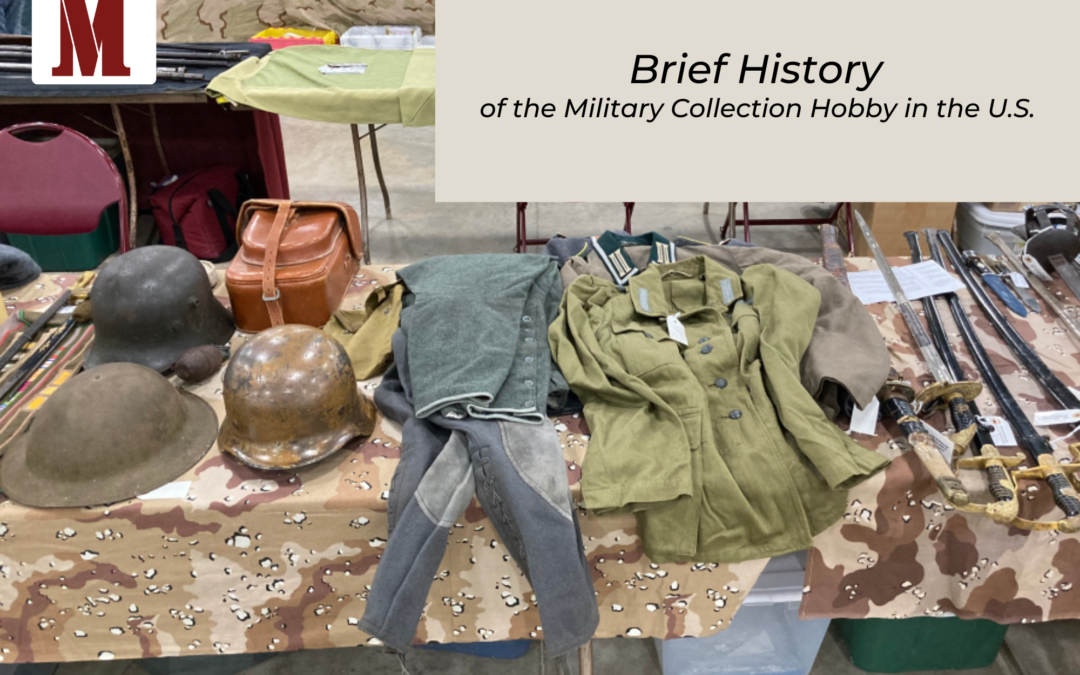I have been asked to talk about the items that I search for the most. After much thought I think the best way to answer this question is to do a quick survey of the military collecting hobby in this country. Our Founding Fathers were strongly against a standing army. They had first-hand experience with numerous European Wars of the 18th century, so they wanted to free this new land from these old problems. Despite military short-comings in the War of 1812 and the US Civil War, this policy lasted pretty much throughout the 19th century. The Congressional Medal of Honor was created during the Civil War, but the other awards generated by this massive war were created by state or fraternal organizations. The 20th century pulled America into greater awareness of its own national defense. The 1898 Spanish American War saw American Soldiers fighting in Cuba, the Philippines, China and other foreign lands. In 1907, Congress authorized a series of service medals that recognized service in the Civil War, Indian Wars, Spanish American War and the numerous small wars in Central America and the Caribbean. After the Civil War, several companies like Tiffany’s and Horstman started offering elaborately engraved sabers and other high-end military accoutrements. The first military surplus store Bannerman’s was created on an island off the coast of New York City. Bannerman’s sold a wide variety of military goods largely left over from the American Civil War and outfitted many Latin American and other small budget armies from around the world.
World War I and the Great Depression briefly changed the paradigm
Improved transportation systems, better housing and growing affluence were a few of the changes that made it possible for the American Middle Class to start their various collecting hobbies. US Doughboys brought back all types of souvenirs as the German Army marched home leaving years of artifacts in their wake. I have seen WWI German Helmets with stamps and addresses that were mailed home. An American entrepreneur purchased thousands of German Belt Buckles from the new German Government, that was desperate for hard currency, that he then sold in the backs of various magazines for decades. The Great Depression of the 1930’s placed a hard brake on military collecting. Most Americans had become extremely disenchanted that the “War to End All Wars” had brought so little peace and prosperity at such a great cost of lives and treasure they wanted nothing to do with foreign wars.
World War II Military Collections
The positive American Military experience in WWII created the hobby of modern militaria collecting. Millions of GIs brought back all types of exotic looking military artifacts from all over the world. This captured the imagination of their sons and grandsons who started collecting everything they could find. This motherload of items nourished the hobby for over 50 years. During the 1990’s the supply was finally exhausted as most WWII Veterans passed from the scene. It is the small percentage that remains that is so highly sought after today and is the basis of my efforts.
To simplify my search, there are some military items that I do not buy:
- Military Vehicles and Trailers
- Generators
- Electronic Test Equipment
- Tents
- Radios and Radio Power Supplies
- Medical and Surgical Tables and Equipment
- Stainless Steel Tables and Dining Facility Equipment
- Large Wood and Metal Storage and Equipment Crates and Boxes
- Any item that weighs more than 70 pounds
Next time I will talk about items that are difficult to sell and those that are the most lucrative.
